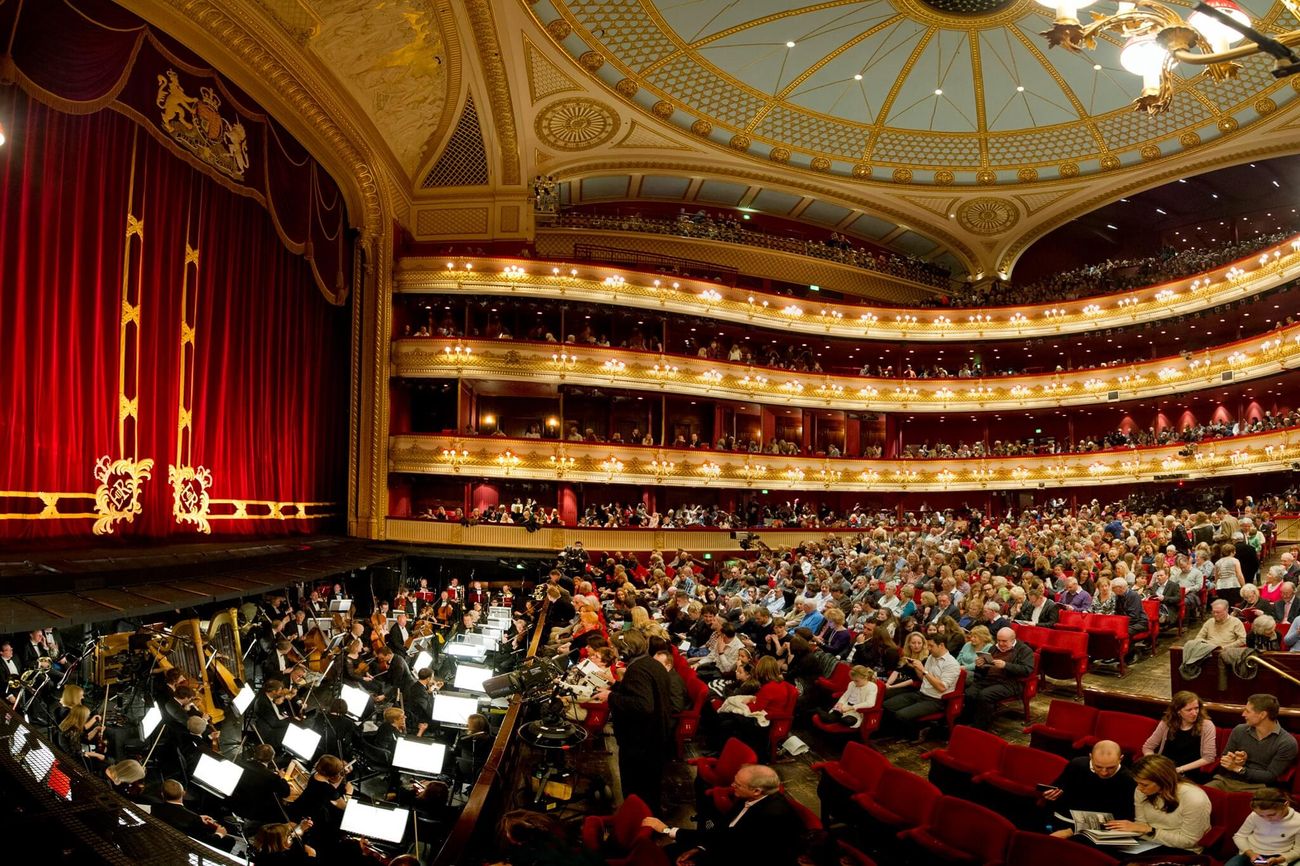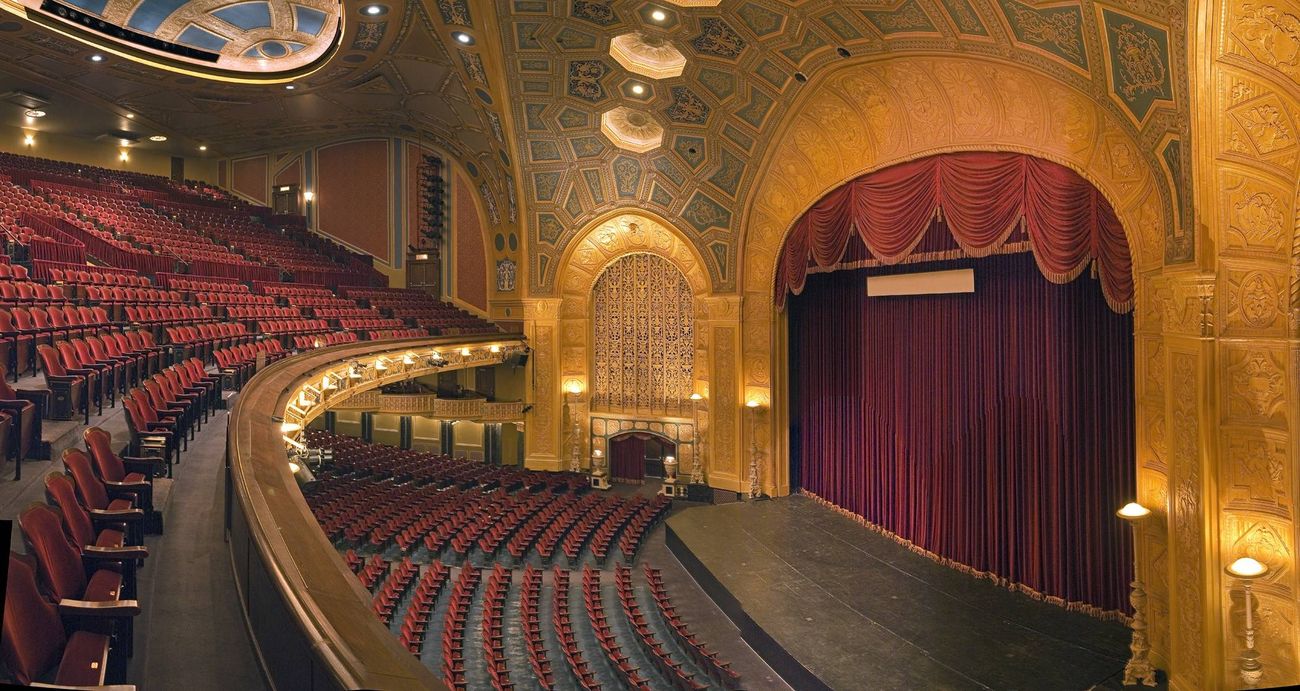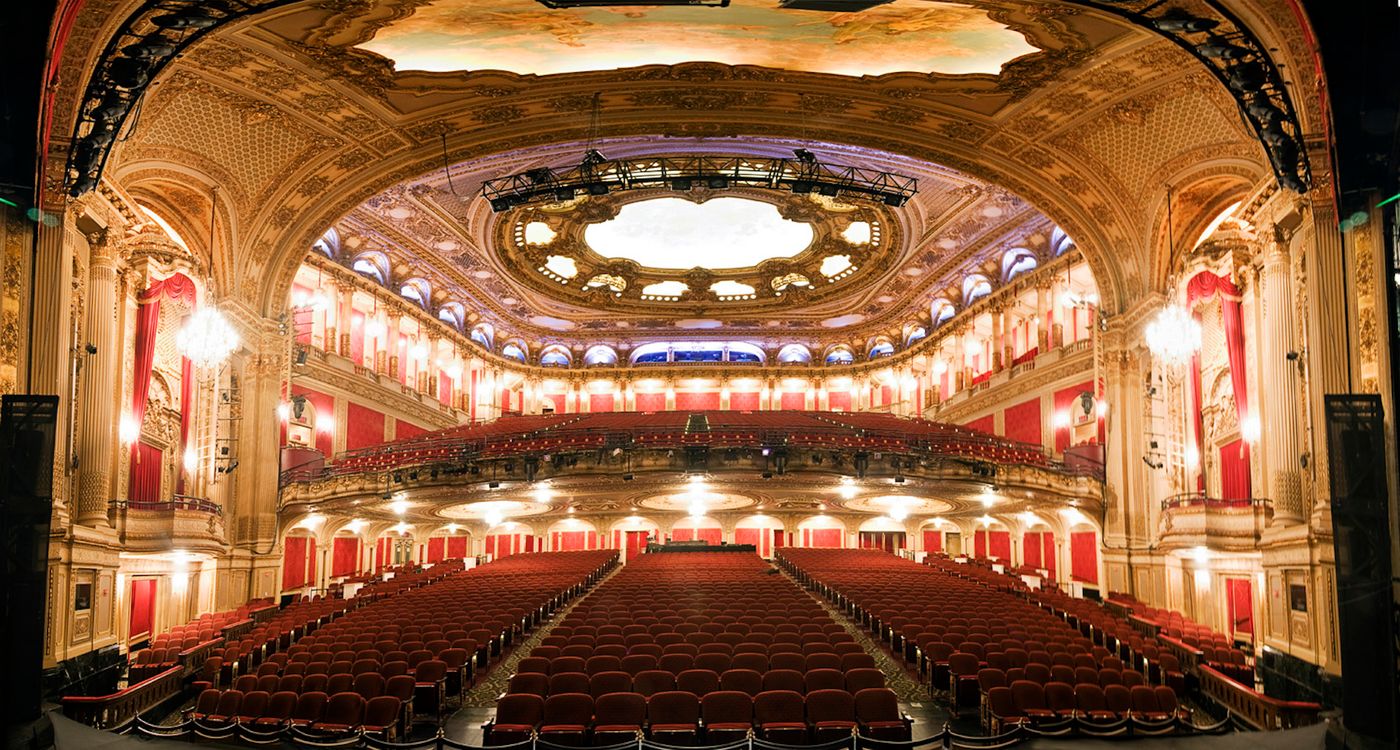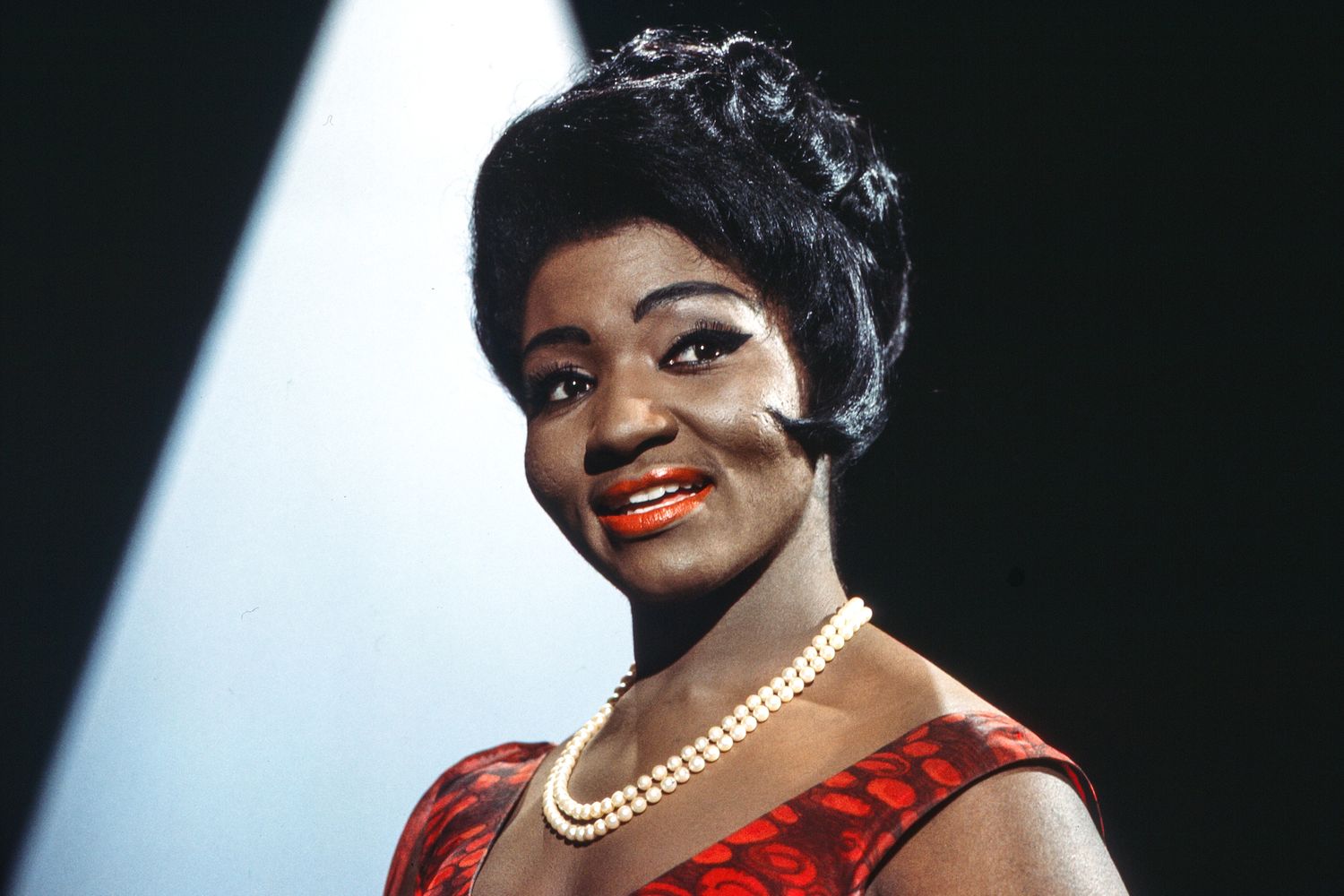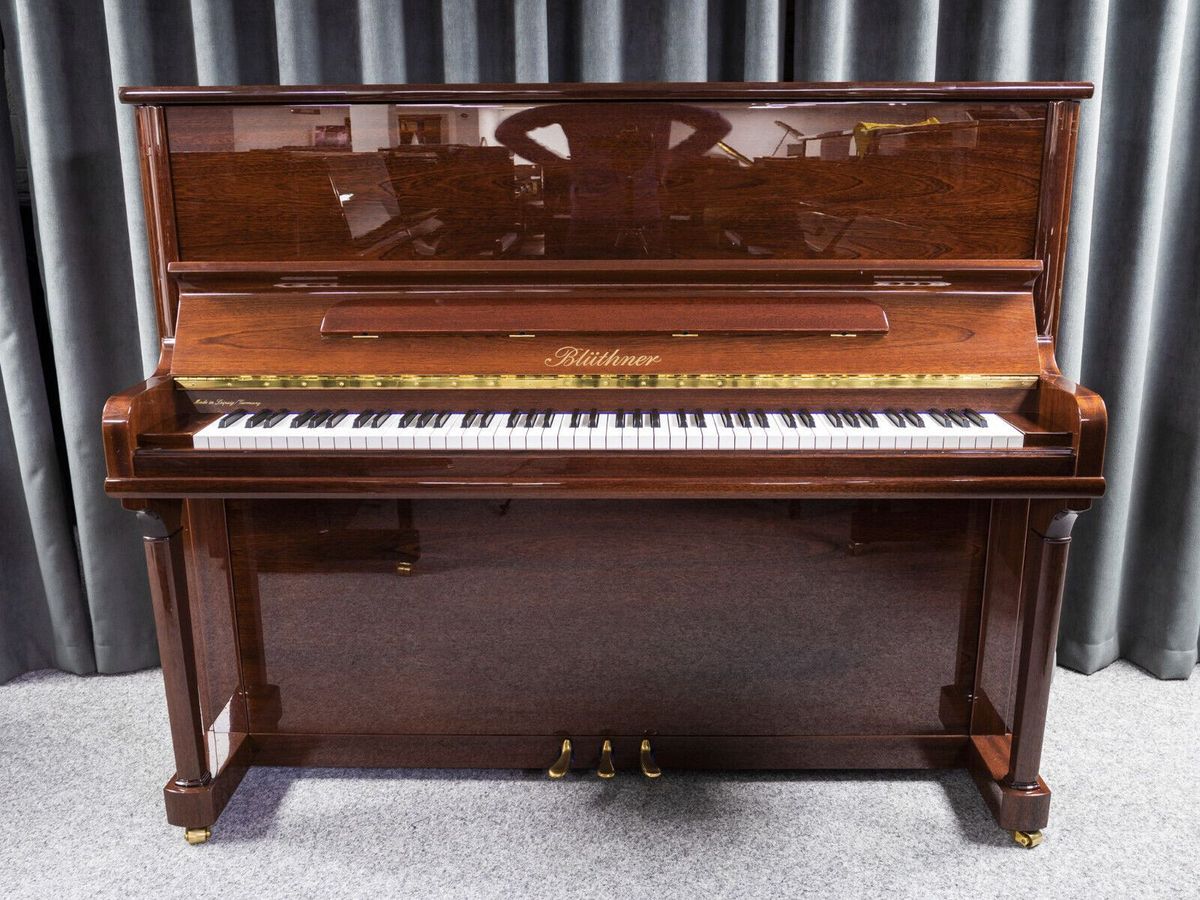Home>Events & Info>Opera>How Big Is Sydney Opera House


Opera
How Big Is Sydney Opera House
Modified: January 22, 2024
Discover the grandeur of Sydney Opera House, a renowned icon of opera and architecture. Uncover the sheer magnificence and size of this world-famous cultural landmark.
(Many of the links in this article redirect to a specific reviewed product. Your purchase of these products through affiliate links helps to generate commission for AudioLover.com, at no extra cost. Learn more)
Table of Contents
Introduction
The Sydney Opera House is one of the most iconic landmarks in the world, renowned for its distinctive sail-like architectural design and its rich cultural significance. Located in Sydney, Australia, it is a symbol of the city’s vibrant arts and entertainment scene and has become a top tourist attraction.
The construction of the Sydney Opera House was a monumental undertaking, with its unique design presenting numerous engineering and logistical challenges. Despite the difficulties, it has stood the test of time and is now a UNESCO World Heritage site.
Since its completion in 1973, the Sydney Opera House has not only become a hub for world-class performances and events but also a symbol of Australia’s artistic excellence. It has hosted a plethora of international artists, from opera singers to ballet dancers, and continues to attract visitors from across the globe.
In addition to its cultural significance, the Sydney Opera House also holds immense economic importance. It contributes significantly to the tourism industry in Australia, attracting millions of visitors each year who come to witness its architectural beauty and attend performances in its various venues.
In this article, we will delve into the history, architecture, construction challenges, cultural significance, economic impact, and tourism potential of the Sydney Opera House. We will also explore its major performances and events, as well as its ongoing maintenance and renovation efforts. Join us on this journey to uncover the secrets and wonders of this iconic structure.
History of Sydney Opera House
The story of the Sydney Opera House dates back to the 1950s when the need for a new performing arts venue in Sydney became apparent. In 1955, the New South Wales (NSW) Premier Joseph Cahill announced an international design competition to create an opera house as part of a revitalization plan for the city’s waterfront.
The competition attracted entries from architects around the world, but it was the controversial design by Danish architect Jørn Utzon that caught the attention of the judges. Utzon’s design featured a series of sail-like concrete shells that would become the iconic image of the Sydney Opera House.
Construction on the Sydney Opera House began in 1959, but it quickly encountered numerous challenges. The complex design and innovative construction techniques pushed the boundaries of engineering at the time. Additionally, the project faced significant budget overruns and political disputes, which ultimately led to Utzon resigning from the project in 1966.
Despite Utzon’s departure, construction continued under the guidance of a new team of architects and engineers. The Opera House was officially opened by Queen Elizabeth II on October 20, 1973, though it was not fully completed until 1973. After the completion, Utzon was recognized for his visionary design and was invited to return to Sydney to oversee the final stages of the project.
Today, the Sydney Opera House stands as a testament to architectural innovation and perseverance. Its unique design and stunning location make it an internationally recognized symbol of Sydney and Australia as a whole. The Opera House has become synonymous with the country’s cultural identity and serves as a constant reminder of the power of human creativity and determination.
In the next sections, we will delve deeper into the architectural features and construction challenges that define the Sydney Opera House, as well as its enduring place in Australian culture and the impact it has on the economy and tourism industry.
Architecture and Design
The Sydney Opera House’s architecture and design are undoubtedly its most distinctive features, setting it apart from any other structure in the world. Designed by Danish architect Jørn Utzon, the unique design was inspired by organic forms found in nature, particularly the sails of ships and the shapes of shells.
The opera house is composed of a complex series of precast concrete shells, which are interlocking and create the iconic sail-like appearance. These shells are supported by rib-like structures known as “ribs,” with each shell varying in size and shape. The design allows for a harmonious integration with the surrounding Sydney Harbor and showcases the beauty of the waterfront location.
One of the remarkable aspects of the architecture is the use of the “shell vault” construction technique. This technique involves creating each shell segment as a separate spherical segment with a radius of around 75 meters. These segments are then linked together to form the overall form of the opera house. The complexity of this design challenged conventional construction methods at the time and required innovative engineering solutions.
Besides the exterior, the interior spaces of the Sydney Opera House are equally impressive. The main performance venue, the Concert Hall, features outstanding acoustics and can seat up to 2,679 people. Other performance spaces include the Opera Theatre, Drama Theatre, Playhouse, and Studio, each designed with specific performance requirements in mind.
Throughout the design process, Utzon also paid careful attention to the integration of natural light within the opera house. The extensive use of glass facades and skylights allows for an abundance of natural light to flood the interior spaces, creating a visually stunning and dynamic environment for visitors and performers alike.
The architectural and design achievements of the Sydney Opera House have earned the structure numerous accolades and recognition, including UNESCO World Heritage status in 2007. Its innovative and visionary design continues to inspire architects and artists around the world.
In the next section, we will explore the construction challenges that accompanied the realization of this ambitious architectural masterpiece.
Construction Challenges
The construction of the Sydney Opera House was not without its fair share of challenges. The ambitious design and innovative construction techniques presented significant hurdles that needed to be overcome throughout the project.
One of the main obstacles faced during the construction was the complex and unconventional shape of the opera house. The spherical segment shells, interlocking in a series of sail-like formations, required precision and careful engineering. At the time, no one had ever attempted to construct a building of this scale and complexity.
Another significant challenge was the development of a suitable construction method for the shells. Jørn Utzon and his team of engineers had to pioneer new approaches to create the precast concrete shells. The solution involved the use of innovative construction techniques, including slip-forming and adhesives specific to the project.
Moreover, the construction faced financial and political difficulties. The budget for the project quickly escalated, leading to funding issues and public backlash. The rising costs contributed to ongoing disputes between various parties involved in the project, including Utzon and the state government. Ultimately, Utzon resigned from the project in 1966, leaving others to complete his vision.
Despite these challenges, the construction of the Sydney Opera House persevered, led by a team of architects and engineers who were determined to see the project through to completion. The technique of precasting the concrete shells off-site and then transporting them to the construction site was employed to expedite the process.
Finally, after years of construction and overcoming numerous hurdles, the Sydney Opera House was officially opened in 1973. It stands as a testament to human ingenuity, determination, and the power of visionary architecture.
In the next section, we will explore the iconic status and cultural significance that the Sydney Opera House holds not only in Australia but also on a global scale.
Iconic Status and Cultural Significance
The Sydney Opera House has achieved an unparalleled level of iconic status and cultural significance since its completion. As one of the most recognizable architectural landmarks globally, it has become an enduring symbol not only for Sydney but for Australia as a whole.
The unique design and striking silhouette of the Sydney Opera House have made it an iconic emblem of the city’s skyline. Its sail-like shells are instantly recognizable and have become synonymous with Australian culture and identity. It has been featured in countless films, television shows, and postcards, cementing its status as a global icon.
Beyond its physical beauty, the Sydney Opera House holds immense cultural significance. It is home to several prestigious performing arts companies, including Opera Australia, Sydney Symphony Orchestra, and The Australian Ballet, among others. These institutions showcase a diverse range of artistic performances, from opera and ballet to theater and symphony concerts, attracting both local and international talents.
The opera house has played host to countless world-renowned artists and performers, showcasing the best of the global arts scene. From Luciano Pavarotti and Maria Callas to Mikhail Baryshnikov and Yehudi Menuhin, the Sydney Opera House has witnessed the brilliance of countless talents across various art forms.
Furthermore, the Sydney Opera House has become a vital cultural hub, fostering creative expression, and nurturing emerging artists. It regularly features exhibits, workshops, and festivals that celebrate the vibrant and diverse arts landscape of Australia.
Aside from its artistic and cultural contributions, the opera house serves as a symbol of national pride and achievement for Australians. It represents the country’s commitment to innovation, creativity, and pushing the boundaries of what is possible. Its inclusion on the UNESCO World Heritage list in 2007 further solidifies its cultural value, recognizing its unique architectural and cultural contributions.
Overall, the Sydney Opera House stands as a testament to the power of artistic expression and the impact of visionary design. Its iconic status and cultural significance continue to inspire and captivate audiences from around the world.
In the following sections, we will delve into the major performances and events that have taken place within the walls of this architectural masterpiece, as well as its economic impact and contribution to tourism.
Major Performances and Events
The Sydney Opera House has hosted a plethora of major performances and events that have left an indelible mark on the cultural landscape of Australia and the world. Its acclaimed venues provide a stunning backdrop for a wide range of artistic endeavors, attracting renowned artists and performers from various disciplines.
Opera performances have been a cornerstone of the Sydney Opera House’s programming since its inception. Opera Australia, the country’s premier opera company, has staged countless productions in the opera theater. From beloved classics like Verdi’s “La Traviata” to contemporary works like Brett Dean’s “Hamlet,” the opera house has been a stage for exquisite vocal performances and dramatic storytelling.
The Sydney Symphony Orchestra, another resident company, has graced the Concert Hall with its outstanding symphonic performances. Conducted by internationally renowned maestros, the orchestra has captivated audiences with incredible renditions of masterpieces by composers such as Beethoven, Mozart, and Mahler.
Ballet enthusiasts have been treated to breathtaking performances by The Australian Ballet, the national ballet company, in the opera house’s theaters. From timeless classics like “Swan Lake” and “The Nutcracker” to contemporary works by choreographers such as Graeme Murphy and Stephen Baynes, ballet performances at the Sydney Opera House are a feast for the eyes and the soul.
The Sydney Opera House is not limited to classical performances alone. It has welcomed renowned theater companies, including the Sydney Theatre Company, which has staged groundbreaking productions in the Drama Theatre. Leading actors such as Cate Blanchett and Geoffrey Rush have graced its stages, showcasing exceptional dramatic performances.
Furthermore, the opera house hosts a diverse range of events and festivals that celebrate various art forms. The annual Sydney Festival brings together local and international talent in a vibrant showcase of theater, dance, music, and visual arts. Vivid LIVE, a part of the annual Vivid Sydney festival, presents innovative music performances and collaborations in the unique setting of the Sydney Opera House.
These are just a few examples of the numerous major performances and events that have taken place within the walls of the Sydney Opera House. Each year, the venue continues to captivate audiences with its dynamic and diverse programming, serving as a premier destination for world-class artistic experiences.
Coming up next, we will explore the economic impact of the Sydney Opera House and its role in attracting visitors from around the globe.
Economic Impact
The Sydney Opera House holds significant economic importance, contributing to the local and national economy in various ways. Its status as a global cultural icon and its diverse range of performances and events attract millions of visitors each year, resulting in considerable economic benefits for Australia.
Tourism is a major driver of the economic impact generated by the opera house. The iconic architecture and stunning waterfront location make it a must-visit attraction for tourists from around the world. Visitors come to marvel at the beauty of the building, attend performances, and explore the surrounding area. The influx of tourists brings revenue to the local economy through spending on accommodation, dining, retail shopping, and transportation.
The Sydney Opera House also plays a pivotal role in boosting the local arts and entertainment industry. Its world-class performances and events contribute to the growth and sustainability of the performing arts sector in Australia. The opera house serves as a platform for local talent, providing opportunities for artists, musicians, dancers, and theater professionals to showcase their skills and gain international recognition.
In addition, the opera house’s presence has catalyzed the development of a thriving hospitality industry in its vicinity. Restaurants, cafes, and bars located in and around the opera house precinct benefit from the steady stream of visitors attending performances and exploring the area. This spillover effect creates employment opportunities and generates revenue for local businesses.
The economic impact of the Sydney Opera House extends beyond the immediate vicinity. The venue attracts international media coverage and attention, putting Sydney and Australia in the global spotlight. This increased visibility promotes the country as a desirable tourist destination and helps attract international visitors, further benefiting the tourism industry and the economy as a whole.
Moreover, the Sydney Opera House’s influence extends into the events and conferences sector. Its unique and iconic spaces are sought after for corporate events, conferences, and weddings. The revenue generated from hosting such events contributes to the overall economic impact of the opera house and supports its ongoing maintenance and operations.
Overall, the Sydney Opera House is not only a cultural landmark but a significant economic driver for Australia. Its ability to attract visitors, support local businesses, and contribute to the growth of various industries makes it a vital asset in promoting economic prosperity and development.
In the next section, we will explore the role of the Sydney Opera House as a top tourist attraction and its impact on the visitor experience.
Tourism and Visitor Experience
The Sydney Opera House is undeniably one of the most sought-after tourist attractions in Australia, drawing millions of visitors each year. Its distinctive architecture, cultural significance, and stunning waterfront location make it a must-visit destination for both domestic and international travelers.
One of the key highlights of the visitor experience at the Sydney Opera House is the opportunity to explore the iconic building itself. Guided tours provide visitors with a behind-the-scenes look at the various performance venues, including the Concert Hall, Opera Theatre, and Drama Theatre. These tours offer fascinating insights into the history, architecture, and backstage operations of the opera house, allowing visitors to delve deeper into its fascinating narrative.
The opera house is not just a place to admire from the outside. Its diverse program of performances and events ensures that visitors can immerse themselves in the world-class arts and entertainment that it is renowned for. From operas and symphony concerts to ballet performances and theater productions, there is something for everyone to enjoy. Attending a performance at the Sydney Opera House is a truly memorable experience, leaving a lasting impression on visitors.
For those seeking a more casual experience, the opera house precinct offers a range of dining options. From elegant restaurants serving gourmet cuisine to cozy cafes offering light bites and beverages, visitors can indulge their taste buds while enjoying panoramic views of the harbor and the iconic structure. The opportunity to dine in such a unique setting enhances the overall visitor experience.
Furthermore, the waterfront location of the Sydney Opera House provides a perfect backdrop for leisure activities. The surrounding gardens and walkways offer picturesque spots for relaxation and taking in the breathtaking views of the harbor. Visitors can also embark on harbor cruises or take a stroll along the iconic Sydney Harbour Bridge, which is conveniently accessible from the opera house precinct.
The Sydney Opera House also offers a range of educational and cultural programs, including workshops, masterclasses, and exhibitions. These initiatives provide visitors with an opportunity to engage with the arts in a meaningful way and deepen their understanding of the creative process.
To ensure a seamless visitor experience, the Sydney Opera House continuously strives to provide top-notch facilities and services. Amenities such as ticketing and information centers, gift shops, and exclusive lounges contribute to enhancing visitor comfort and satisfaction.
Visiting the Sydney Opera House is more than just a tourist attraction – it is an opportunity to immerse oneself in a world of arts, culture, and architectural wonder. The combination of its iconic design, diverse performances, and stunning location ensure that the visitor experience is truly unforgettable.
In the next section, we will explore the efforts made to maintain and renovate the Sydney Opera House, ensuring its continued grandeur and cultural significance.
Maintenance and Renovations
Maintaining the iconic Sydney Opera House is an ongoing endeavor to preserve its architectural beauty and ensure its functionality for future generations. The opera house requires regular maintenance and occasional renovations to address wear and tear, technological advancements, and changing performance requirements.
Due to its unique design and exposure to the harsh elements of the Sydney waterfront, the opera house requires specialized maintenance measures. The concrete shells, made from precast panels, need continuous inspection and repair to maintain their structural integrity. Special coatings are applied to protect the concrete from the effects of weather, such as saltwater spray and UV radiation.
The Sydney Opera House also invests in the regular upkeep of its interior spaces. This includes the restoration of original materials, such as timber finishes and fabric linings, and the replacement of outdated systems to meet modern environmental standards. The goal is to retain the opera house’s original character while incorporating sustainable solutions.
Major renovations have been undertaken to improve functionality and enhance the visitor and performer experience. One significant renovation project was the upgrade of the Concert Hall, which involved replacing the stage, updating the acoustics, and improving accessibility. These improvements ensure that the venue continues to provide an optimal setting for world-class performances.
The Joan Sutherland Theatre, another key performance space in the opera house, has also undergone renovations to update technical and backstage facilities. These enhancements benefit both the artists and the audience, creating a more seamless and immersive theater experience.
In recent years, the Sydney Opera House has embarked on a long-term conservation project known as the “Decade of Renewal.” This extensive program aims to address various issues, including roof waterproofing, accessibility enhancements, and the rejuvenation of public spaces. These efforts ensure that the opera house remains a functional and inviting space for performers, visitors, and the wider community.
Additionally, the opera house recognizes the importance of utilizing sustainable practices in its maintenance and operations. Initiatives such as energy-efficient lighting, waste reduction, and water conservation have been implemented to minimize its environmental impact and contribute to a greener future.
Renovations and maintenance activities at the Sydney Opera House require meticulous planning and collaboration between architects, engineers, conservation specialists, and other experts. The aim is to balance the preservation of its iconic design with the need for modernization and functionality.
The ongoing efforts to maintain and renovate the Sydney Opera House ensure that it continues to shine as a beacon of artistic excellence and architectural grandeur. With each restoration project, the opera house reaffirms its commitment to preserving and perpetuating its legacy for generations to come.
As we conclude our exploration of the Sydney Opera House, we can appreciate the immense cultural, architectural, and economic significance of this iconic structure. Its impact on the arts scene, tourism industry, and local economy is undeniable, making it a true gem not just for Sydney, but for the world.
Conclusion
The Sydney Opera House is a true marvel of architectural ingenuity and artistic expression. From its unique sail-like design to its iconic status as a global cultural landmark, it has captivated the hearts and minds of people around the world.
The opera house’s rich history, marked by a journey of challenges and perseverance, tells a story of human ambition and determination. Despite the setbacks and controversies, the vision of Danish architect Jørn Utzon ultimately came to life, creating an enduring symbol of architectural excellence.
Today, the Sydney Opera House stands as a testament to artistic brilliance, hosting world-class performances across a range of disciplines, from opera and ballet to theater and symphony concerts. Its cultural significance extends beyond Australia, firmly placing it on the international stage as a beacon of artistic innovation.
Beyond its artistic contributions, the Sydney Opera House carries significant economic weight, bolstering the tourism industry and supporting local businesses. Its iconic presence attracts millions of visitors each year, seeking to immerse themselves in the beauty of its architecture and the magic of its performances.
The ongoing efforts to maintain and renovate the Sydney Opera House ensure its continued grandeur and functionality. Through careful conservation and restoration projects, the opera house remains a vibrant and inviting space for both artists and visitors alike.
The Sydney Opera House holds a special place in the hearts of Australians, representing a sense of national pride and achievement. It serves as a symbol of the country’s commitment to creativity, innovation, and the pursuit of excellence.
As we gaze upon the majestic beauty of the Sydney Opera House, we are reminded of the transformative power of architecture and the enduring impact of the arts. It is a place where dreams are realized, emotions are stirred, and memories are created. Whether attending a performance, taking a guided tour, or simply marveling at its splendor from afar, the Sydney Opera House is an experience that leaves a lasting impression on all who encounter it.
So, let us celebrate the Sydney Opera House in all its glory and continue to cherish its cultural and architectural significance for generations to come.


